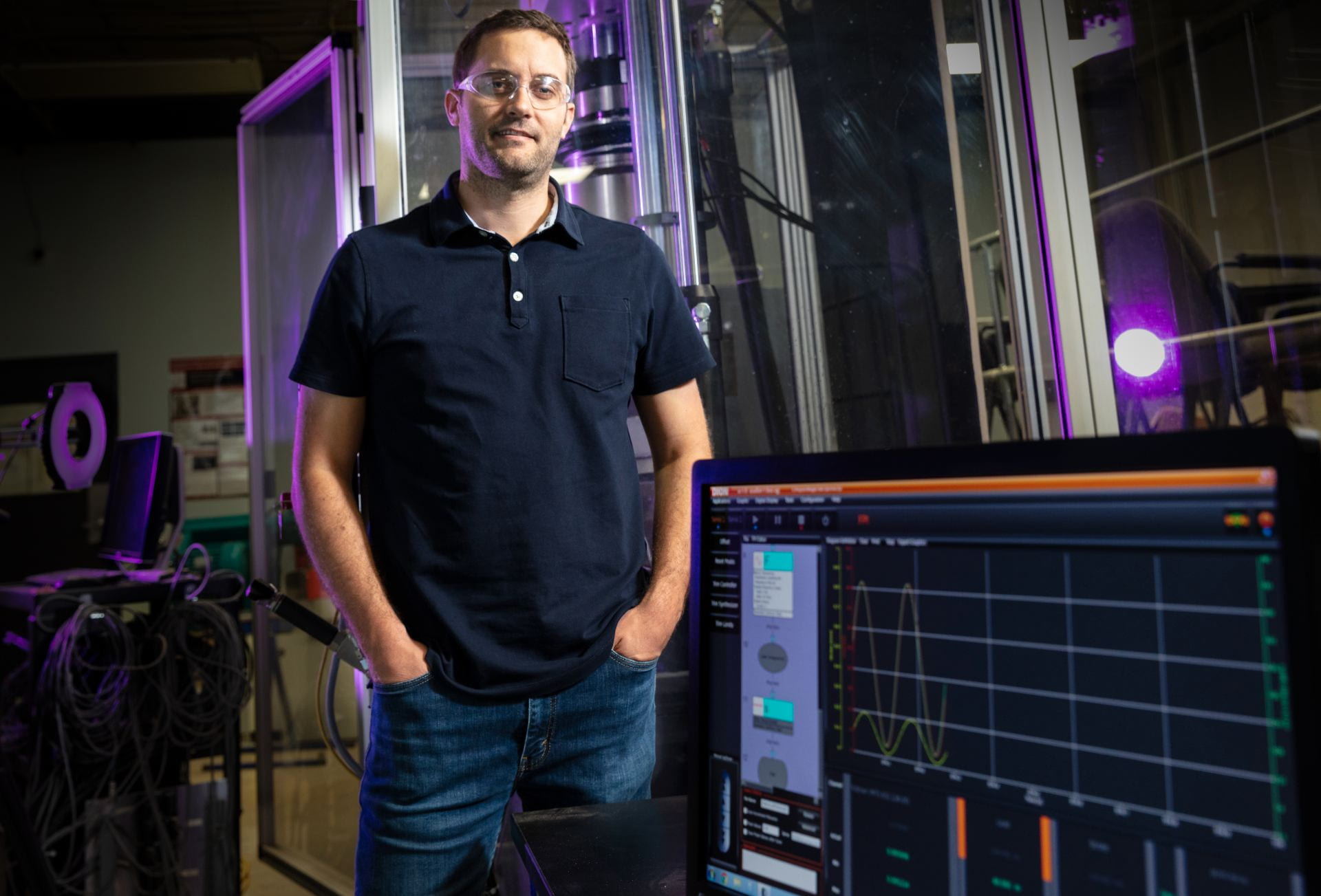$800,000 Awarded to Investigate Shear Connectors in Composite Steel Bridges

Stud shear connectors are used to provide shear transfer between the bridge concrete slabs and steel girders. They are typically welded to the top of the steel girder.
The goal of the four-year grant is to determine how loads transfer from concrete to steel via the shear stress connectors. Of particular interest will be examining the strength and fatigue limits of the connectors in hopes of aiding more efficient design. More efficiently designed bridges generally mean cheaper bridges — or more bridge for the buck.
“We generally make assumptions that all the load goes right through that little stud and that no other forces are transferred through friction or adhesion between the concrete and steel,” Prinz said. “So in our project we’re tasked with determining precisely how the different loads interact and quantifying the different load paths that can occur.”
Much of the work will be performed at the Grady E. Harvell Civil Engineering Research and Education Center, where Prinz is the director. He will build 60-foot-long bridge sections for large-scale fatigue testing. In all, he anticipates doing five large-scale tests and numerous smaller component-level tests.
“The measurement problem that we’re facing here,” Prinz explained, “is trying to understand how much load goes through something that’s embedded in concrete. And the complicated part is that the loads we’re trying to measure are perpendicular to the direction of the studs — so we’re trying to measure shear transfer in an element that’s embedded in concrete, and that’s not an easy thing to do.”
The project will also take Prinz and his team to bridges that are under construction. Before the slabs are poured measurement devices will be placed inside them in hopes of capturing what’s happening during construction and under controlled traffic loads. Small-scale testing of measurement components will be done onsite at the Harvell Center, as well.
Prinz noted that this will also be a great opportunity for doctoral student Callie Clark, who will be doing her Ph.D. work with Prinz on the project, which will involve welding, pouring concrete, designing test fixturing of measurement components, creating load programs and executing tests.
Ultimately, Prinz thinks that if the terms of the grant are met, it will likely contribute to federal design standards for bridges, with potential consequences for the design of every composite steel bridge moving forward.

